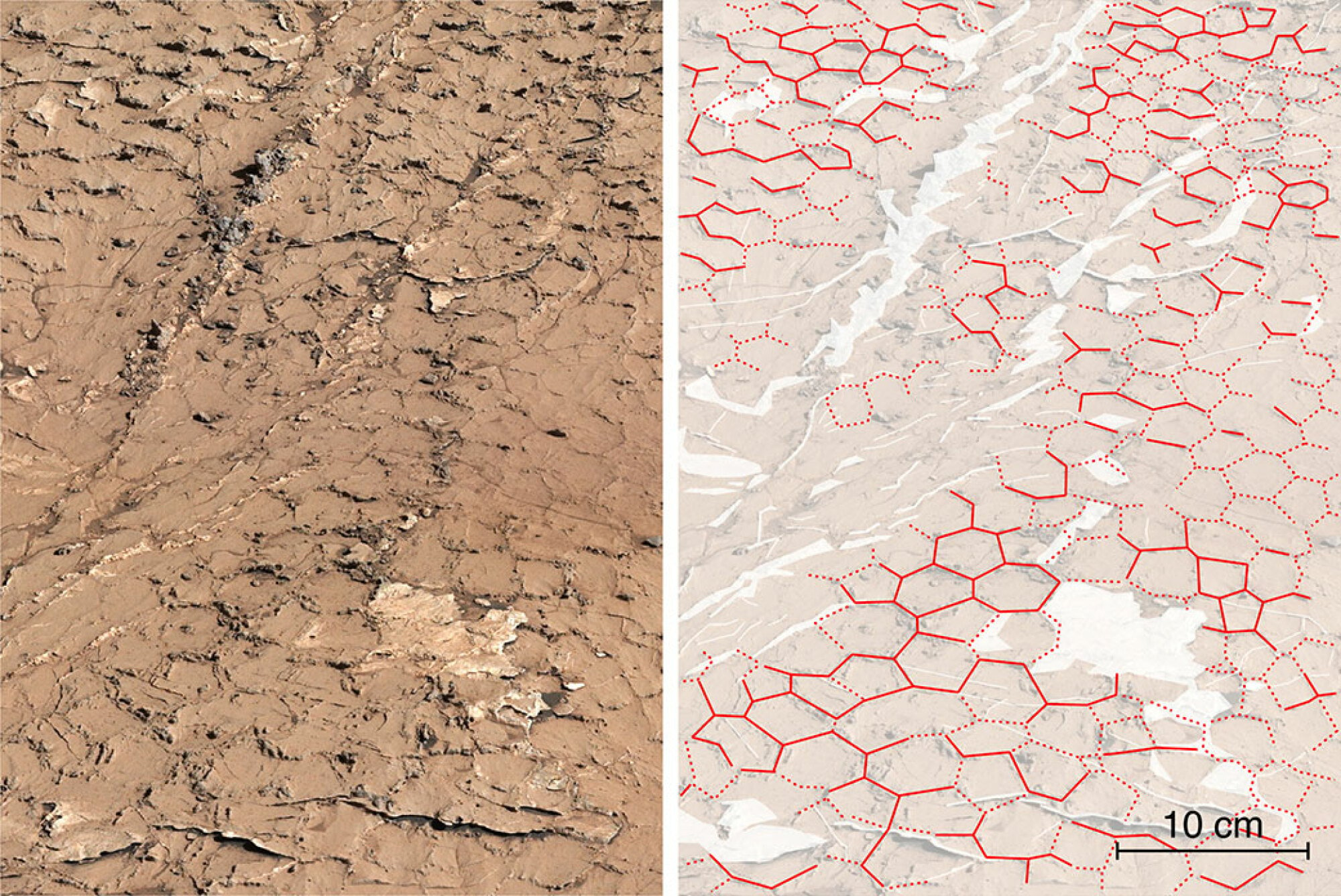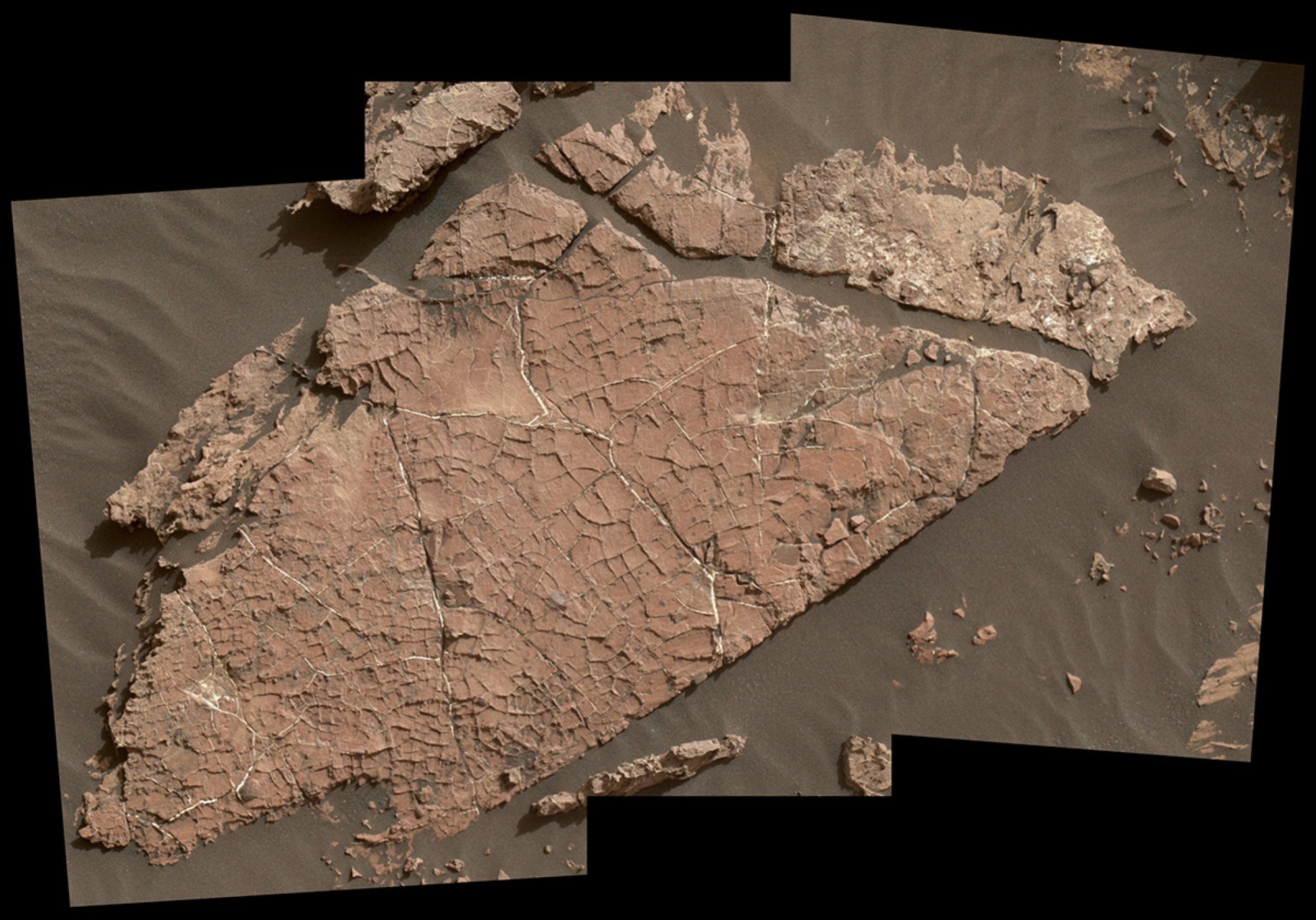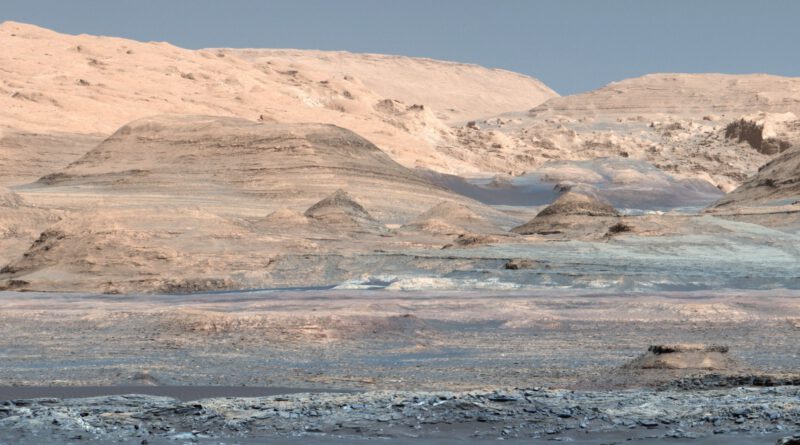Why NASA is psyched about these weird Martian patterns

While rumbling over Mount Sharp on Mars, NASA‘s Curiosity rover found a strange crackled terrain.
These distinct patterns in dry mud, found over 100 million miles away in space, are a thrilling discovery for geologists. The cracks form a lattice of hexagons, signaling that the land has gone through intermittent spells of wetness and dryness. Many scientists credit these environmental shifts with prompting the chemical reactions needed to create microorganisms on Earth.
Of course, scientists have already found ample evidence that Mars could have supported life long ago. But these new geological findings are something quite different, experts say. They reveal the environmental conditions that could have allowed life to emerge on the Red Planet in the first place.
And to think this major breakthrough was all made possible by looking between the cracks — literally.
“This is the first tangible evidence we’ve seen that the ancient climate of Mars had such regular, Earth-like wet-dry cycles,” said William Rapin of France’s Institut de Recherche en Astrophysique et Planétologie in a statement. “But even more important is that wet-dry cycles are helpful — maybe even required — for the molecular evolution that could lead to life.”
A team of researchers including lead author Rapin has published a paper in Nature describing how this peculiar mesh of cracks offers the first evidence of wet-dry cycles occurring on ancient Mars.
“Wet-dry cycles are helpful — maybe even required — for the molecular evolution that could lead to life.”
Curiosity found the mud cracks while exploring a transitional zone of rock between a layer that was rich in clay and another chock full of salty substances called sulfates. Clay minerals tend to form in water, and sulfates form as it evaporates. This intermediate zone preserves a moment in time when lakes and rivers in the Gale Crater, where Mount Sharp stands, began to recede, according to the research.

As the mud dries, it shrinks and breaks apart into T shapes. When moisture returns, those patterns soften again, deforming the Ts into Ys that connect to create hexagons. New sediment deposited into the area kept forming new hexagons, geologists say. Curiosity found a salty crust along the edges of the cracks that prevented them from eroding, which explains how these patterns could survive for billions of years.
Want more science and tech news delivered straight to your inbox? Sign up for Mashable’s Light Speed newsletter today.

Scientists don’t know for sure how life started on Earth, but one strong theory suggests the shifting back and forth between wet and dry conditions helped bring together the ingredients for microbes: simple, primitive living things. Among those first molecules of biology are carbon-based polymers, including nucleic acids.
Earth’s tectonic plates, which Mars lacks, churn the surface of the planet, so examples of its early history are erased. Scientists are eager to study the Martian mud cracks to get better insight not just into the Red Planet but perhaps even the recipe for life on Earth, too.
“It’s pretty lucky of us to have a planet like Mars nearby that still holds a memory of the natural processes which may have led to life,” Rapin said.

